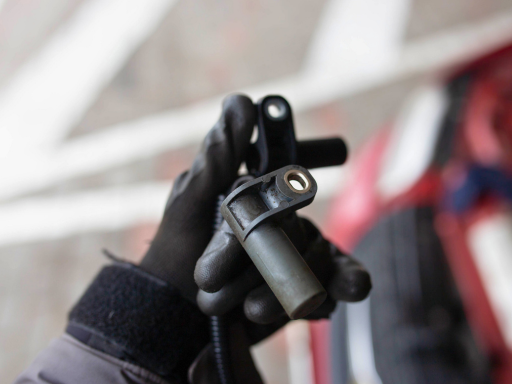Understanding crankshaft and camshaft position sensors
Modern vehicles are smarter than ever—and much of that intelligence is thanks to tiny car sensors working silently under the bonnet. Among the most important are the crankshaft and camshaft position sensors. Though you rarely think about them, these components play a critical role in how safely and efficiently your engine runs.
When either sensor starts to fail, the symptoms can be subtle at first. But if left unchecked, they can quickly lead to poor performance, unexpected stalling, or even engine failure.
What Do Car Sensors Actually Do?
Your car’s engine relies on perfect timing. It needs to know exactly when to inject fuel and spark the ignition, and that’s where the crankshaft and camshaft sensors come in.
The crankshaft position sensor monitors the position and speed of the crankshaft, which is key to engine rotation. It provides the ECU (engine control unit) with data to manage ignition timing and fuel injection.
The camshaft sensor tracks the position of the camshaft, which controls the opening and closing of the engine valves. It ensures that the intake and exhaust valves operate in sync with piston movement. Together, these sensors help the engine “breathe” properly and run smoothly.
How to Spot Early Warning Signs
One of the challenges with sensor issues is that the symptoms can mimic other faults. A rough idle or sudden loss of power might be blamed on spark plugs or fuel injectors, when in fact the crankshaft or camshaft sensor is the real culprit.
Other common signs include difficulty starting, hesitation when accelerating, and occasional engine stalling. Paying attention to these changes and seeking a professional diagnosis early can save you time and frustration down the road.
Maintenance and Prevention Tips
While sensors don’t require traditional servicing like oil or filters, keeping your engine bay clean and ensuring your wiring and connectors are in good condition can extend their life. Heat, oil leaks, and vibration are common factors that shorten sensor lifespan.
During regular servicing, ask your mechanic to inspect these areas—it’s a simple step that can prevent an inconvenient breakdown and keep your vehicle performing at its best.
How Things Go Wrong
When car sensors start to fail, they send inaccurate or intermittent data to the ECU. This can cause hard starting, misfiring, reduced fuel efficiency, and stalling—especially when the engine is warm. A completely failed sensor can prevent the engine from starting at all.
In many cases, a faulty crankshaft or camshaft sensor will trigger a warning light on your dashboard, typically the check engine light. However, some symptoms—like rough idling or reduced power—may appear before that happens.
These aren’t just performance issues; they can become safety concerns, especially if the engine cuts out while driving.
Why Timely Replacement Matters
Unlike some parts that wear visibly, car sensors degrade internally. The failure can be sudden or progressive. Replacing a failing sensor before it breaks completely can prevent more serious problems, including catalytic converter damage caused by unburned fuel.
Replacing these sensors restores your engine’s precision timing and helps improve overall efficiency and safety. You’ll also get smoother performance, better fuel economy, and peace of mind on the road.
Trust the Experts
If your vehicle is hesitating, misfiring, or triggering dashboard warnings, it’s worth having your sensors inspected. At Sandgate Auto Electrics, we specialise in accurate diagnostics and reliable repairs that keep your engine running at its best.
📞 Call us: 07 3269 3158
📍 Visit us: 101 Connaught Street, Sandgate QLD 4017
📧 Email: mail@sandgateautoelectrics.com.au
Don’t let a hidden fault leave you stranded—book a sensor check with our team today.
Useful Resources:

